


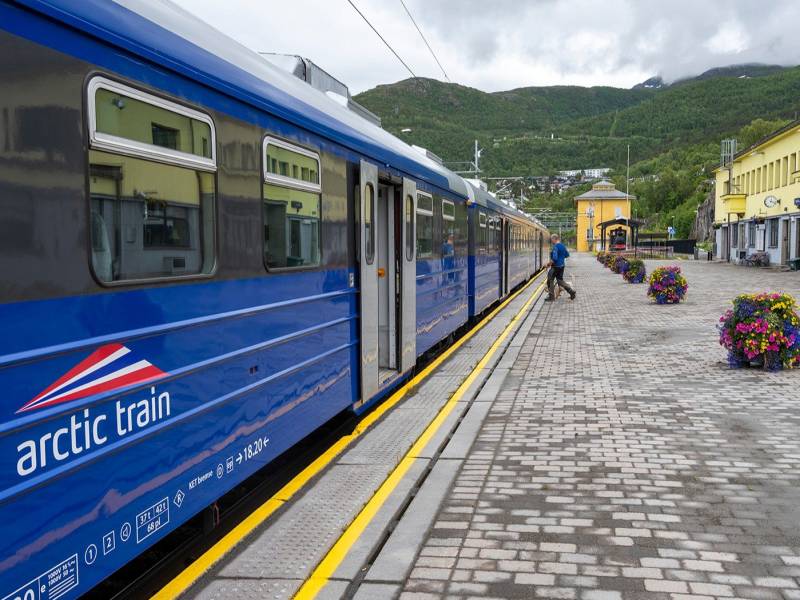
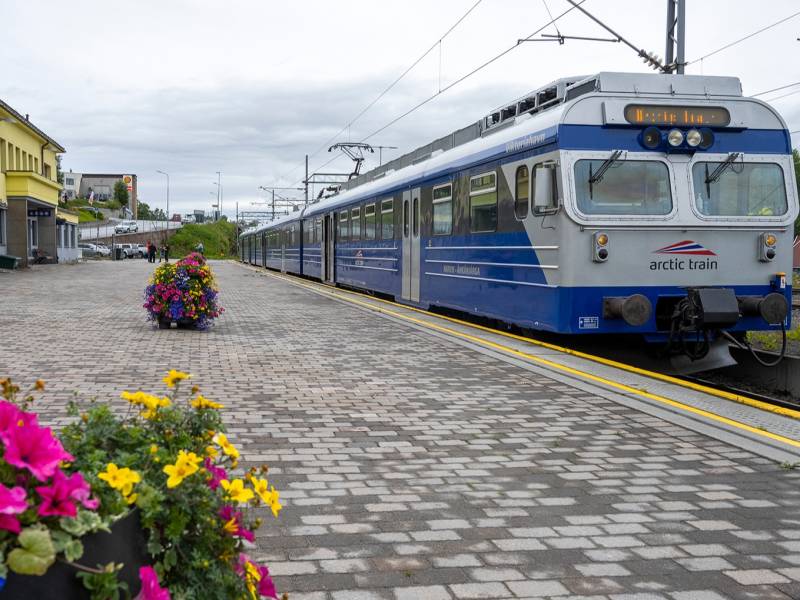

We welcome you to Narvik Station. From here we will guide you through the spectacular trip on the Ofoten Railway. The station was opened to traffic in 1902 which was also the year that Narvik obtained city status. From the city you can experience the magic of the northern lights in wintertime and warm summer evenings with the midnight sun hanging over the horizon. The Ofoten railway extends from Narvik 38kms inwards to the Swedish border where it continues onwards to the rich ore fields of Kiruna. The locals like to talk of time in terms of before and after the building of the Ofoten railway. When the establishment of shipping facilities associated to the railway accelerated growth in the region. The line on the Norwegian side was actually marked out by military personnel. The line was seen as a geo-political challenge which was discussed by general staff on both sides of the border. Consequently, you will also become familiar with many strategic military installations along the way. The station buildings and the track were later modernised and when the track was electrified in 1923 the transformer station was set up right by the entrance to Narvik Station.

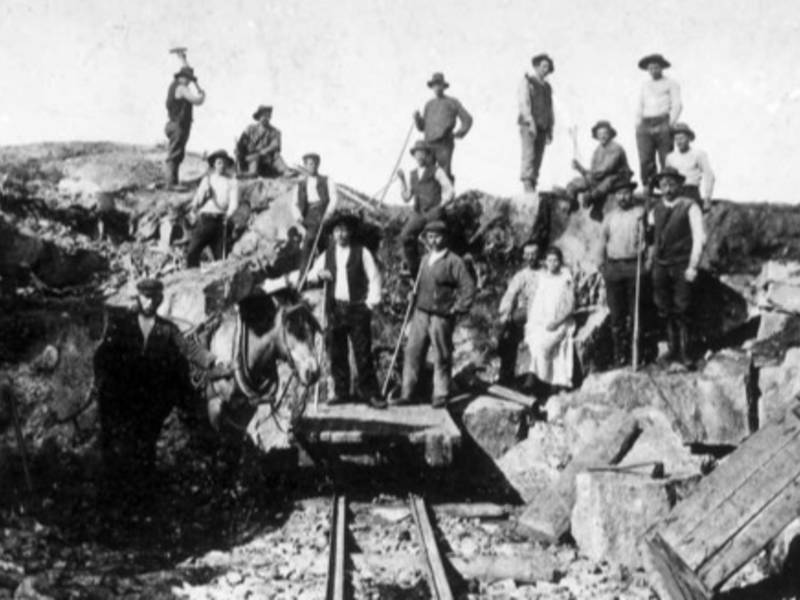
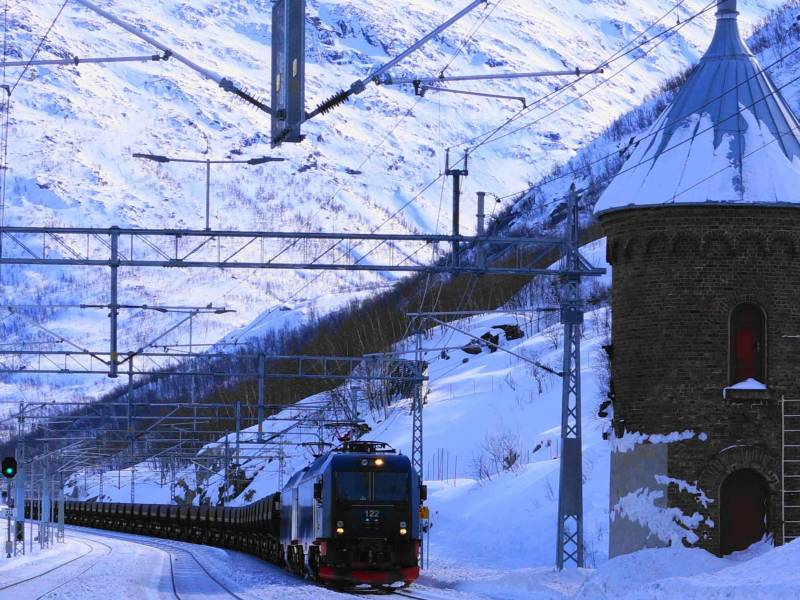
We are now travelling along the Ofoten railway line, the building of which is a story in itself. The iron rich ore fields in the north of Sweden were discovered as far back as the 1600s. The industrial revolution created a huge demand for iron from industries across Europe. The invention of the steam locomotive was the starting point of effective transportation of iron ore from Kiruna through to the harbour in Narvik and from there further onwards to the continent. The ice-free bay in Narvik made it a natural choice for the shipping industry. The building of the Ofoten line was actually done over two periods. The first period was called the English period when the route from Narvik harbour to Katterat was built. The English firstly christened Narvik ‘ Victoriahamn’ but it was changed in 1902 to Narvik. The company which started the construction went bankrupt in 1889 and work stood still for 9 years. The second period commenced in 1898 when Norway and Sweden joined together to build the railway as a state facility. Construction carried on right up to 1902 when the railway from Narvik to Kiruna was completed. The 15th November 1902 is a historic day, that was when the rails were proudly connected and the first train rolled down the line. The official inauguration of the railway was conducted by the King of the union, King Oscar II on the 14th July of the same year.

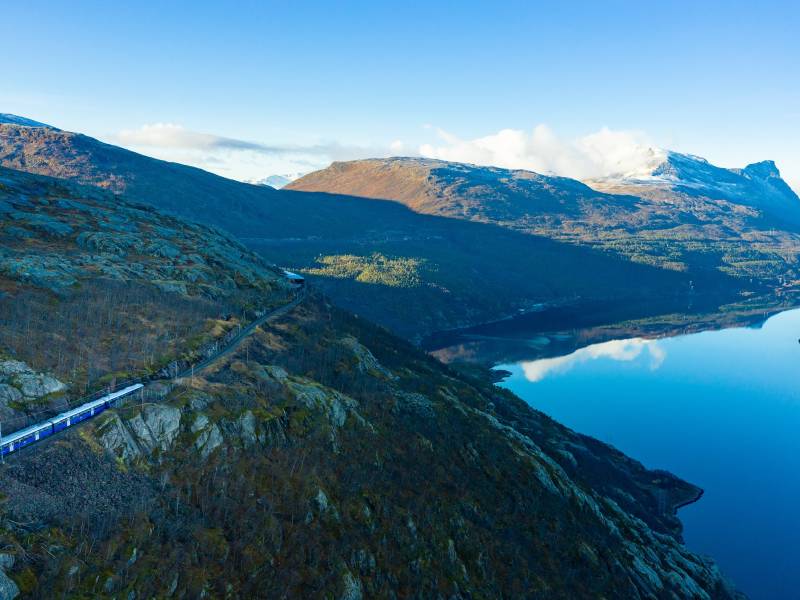

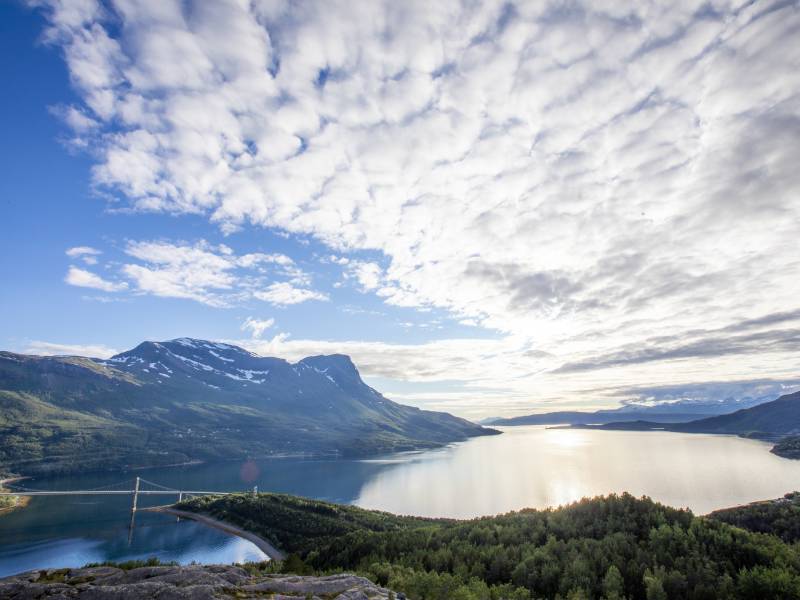
If you now turn your gaze towards the fjord, you will notice that it is quite narrow. Nevertheless, it is deep and has a depth of around 110 metres. The German destroyers could therefore enter without a problem but with no possibility to turn around, they were easily trapped if the Allies came. The fjord is home to four whole German shipwrecks which were visible to train passengers right up until 1951 when the bow parts were removed. Across the fjord you can see the Rombak bridge, a suspension bridge which crosses the Rombaken fjord. The bridge is 765 metres long and has a sailing clearance height of 41 metres. It was opened in 1964 and replaced the ferry crossing between Narvik and Øyjord. There has been a bridge there since 1927 and it was part of the European Route E6 right up until the opening of the Hålogaland bridge when the road was rerouted.
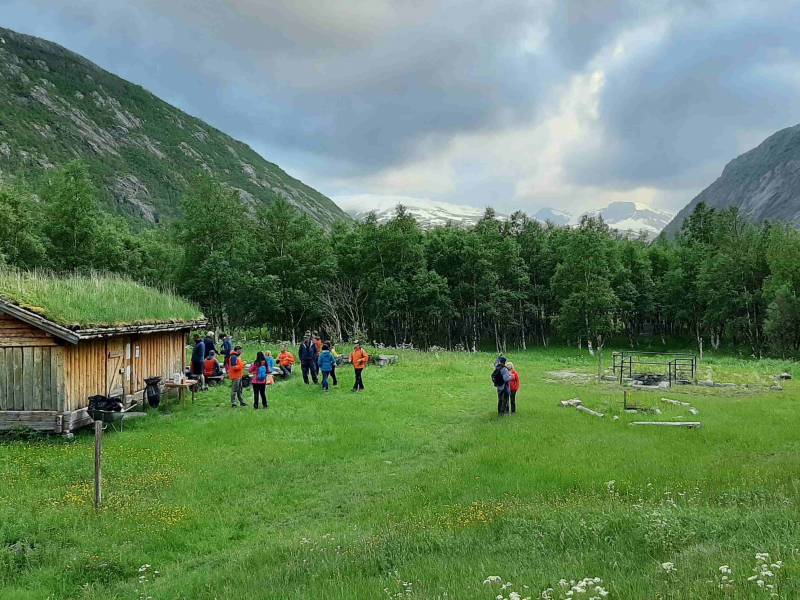
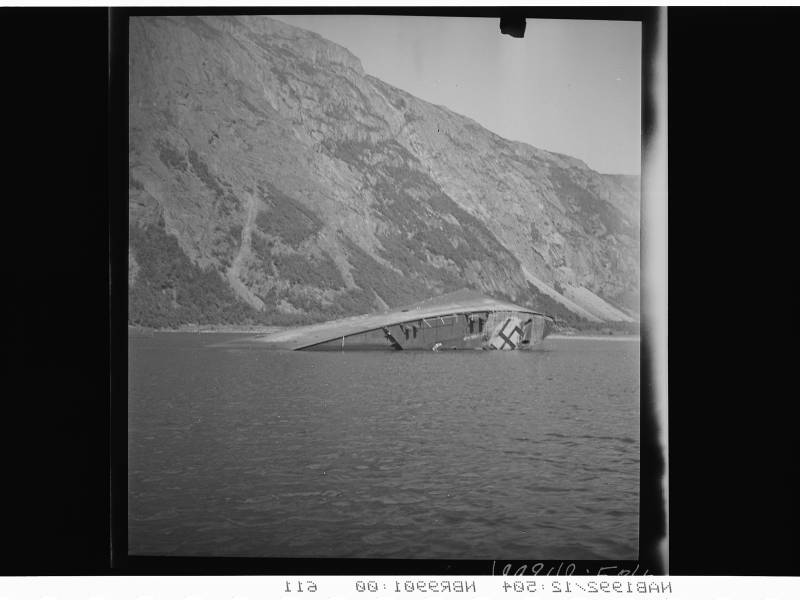
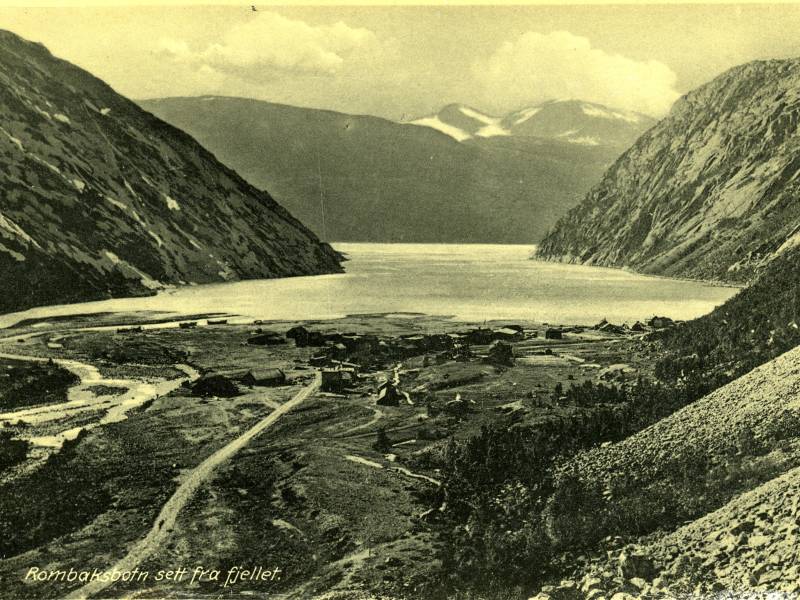
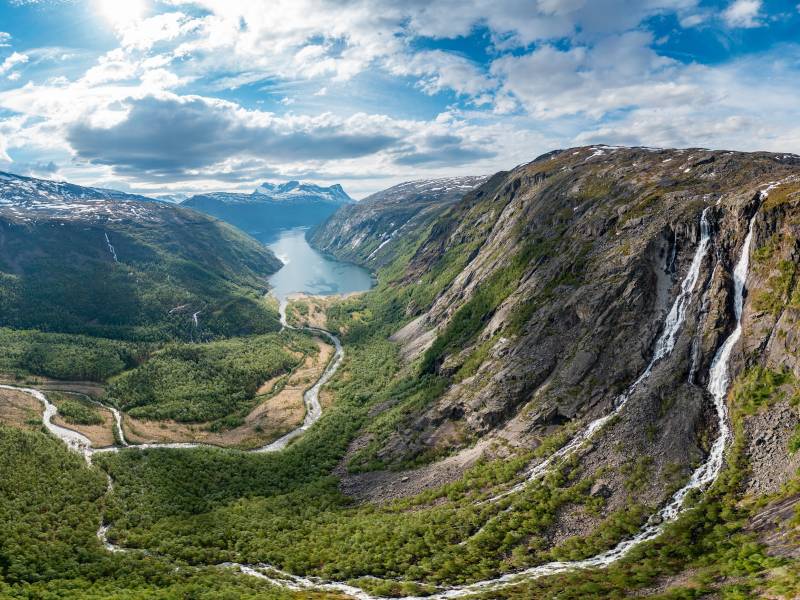
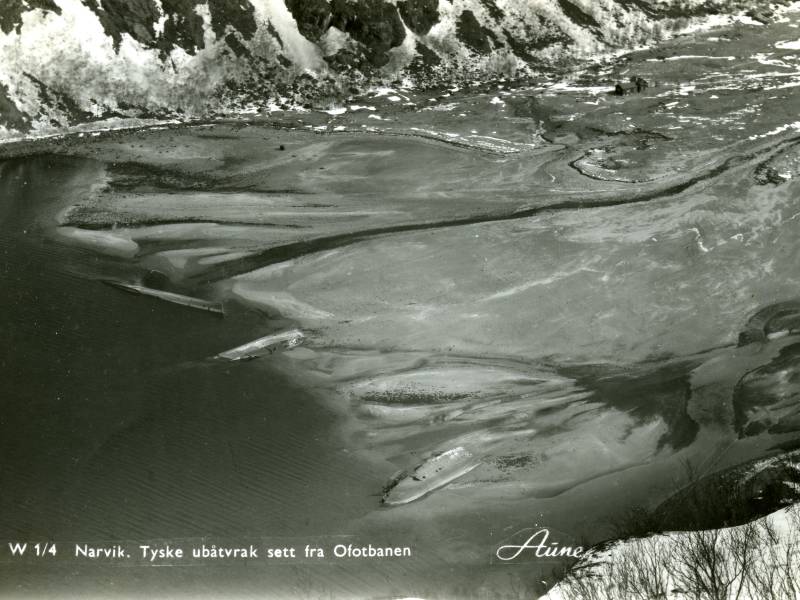
Right here, you can probably find Norway’s shortest and strangest town history. For five years there was a bustling community here in Rombaksbotn made up of the construction workers who were building the Ofoten line. The town could be found at the bottom of the fjord below us, and yes you heard correctly …found! The town disappeared just as quickly as it had sprung up once the construction of the railway was complete. There was a separate quay here which distributed supplies to both the Norwegian and Swedish railways. Creating a proper Swedish–Norwegian environment and it is this that has contributed to the somewhat special Narvik dialect. During the hectic construction period there were several thousand Rallar working in this area in the mountains. Every weekend the city was invaded when they all came down from the mountain to let off steam. Today, there are only memories that are left but the town is still a popular start and end point for hikes along the Rallar road. The town also did not manage to avoid the dramatic acts of war. On the 13th April 1940 three German destroyers ran aground and sank. The crew escaped up the steep mountainside on the north and continued further on to the Norwegian army camp in Bjerkvik where they acquired Norwegian uniforms and weapons. They became part of the 2600 strong German force under the command of General Dietl who became known as the ‘Mountain Navy’. They would later come into battle against Norwegian and Allied forces.
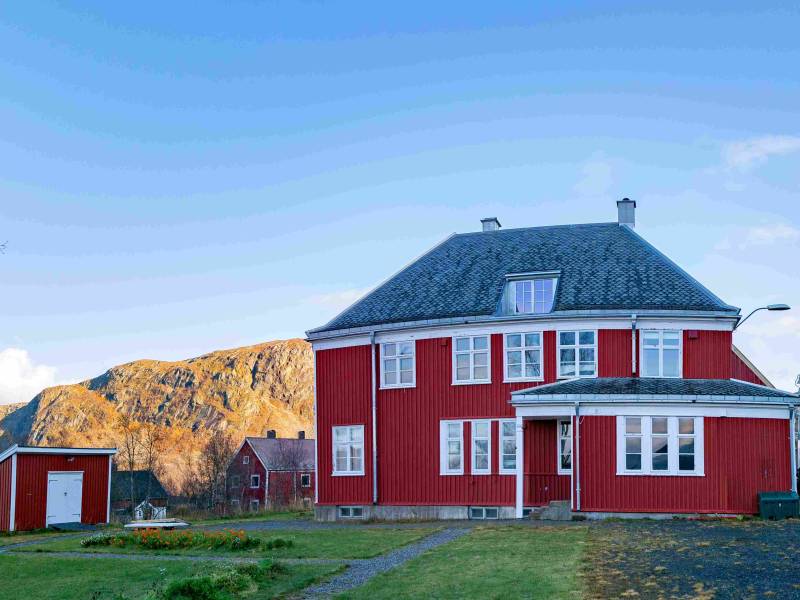


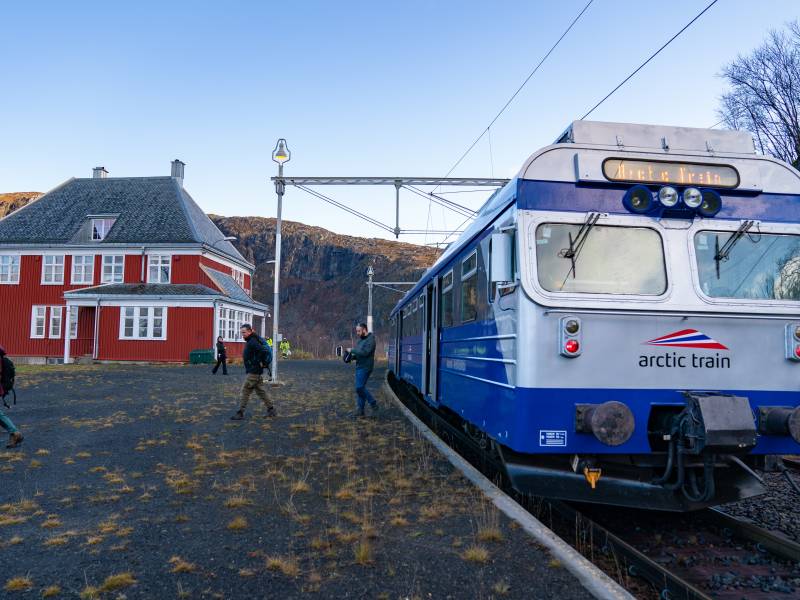
We are now arriving in Katterat which is a popular starting point for hiking the famous Rallar road. From here you can also embark on longer hikes into the Narvik Mountains which have been developed by the Narvik and district tourist association. When the Ofoten line was run on steam there was a manned water tower here, but that was replaced with a transformer station in 1923. In 1932 the Nygård power station came to the Rombaken and then the trains could finally run on Norwegian power. Today the transformer station has been de-commissioned but most of the original equipment remains. Today Katterat station is protected. The station building that was built in 1922 is actually the only one along the Ofoten line that is in the original design. The electrical installations in the station area which gave the power to the railway are also preserved in their original form. Norwegian military forces were also stationed here during the dissolution of the Union between Norway and Sweden in 1905, and you can still see the position and ruins of the barracks. Even though there were not so many inhabitants, the small community was nevertheless well organised. They even had their own shooting team, but the modernisation of the railway led to a surplus of workers and the last permanent resident moved from the village in 1963.
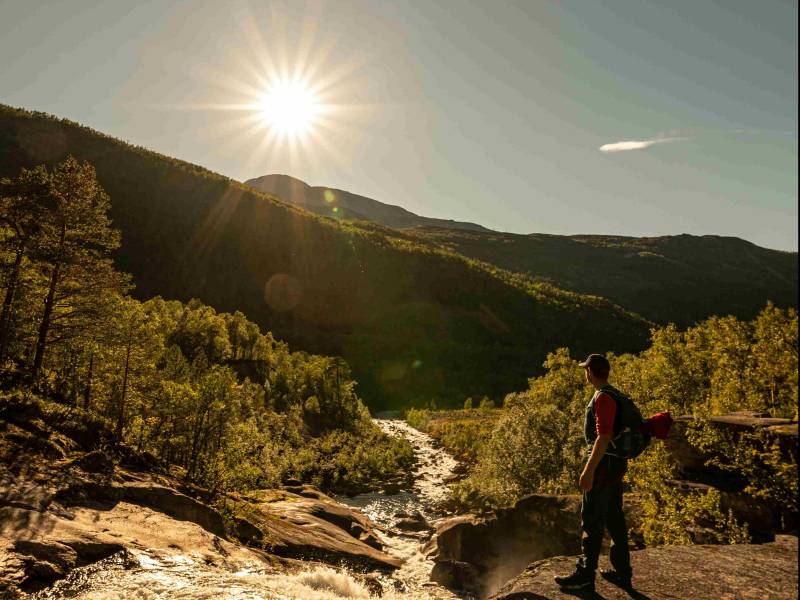



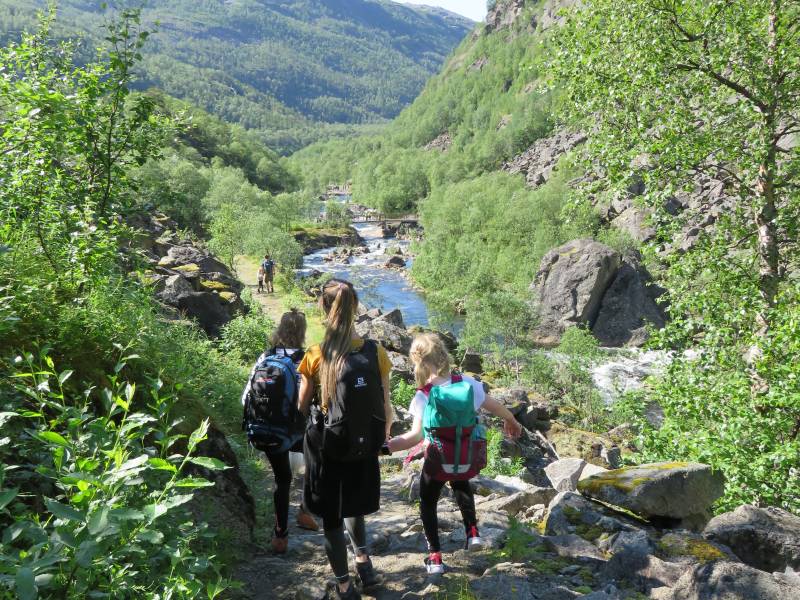
You will undoubtably have noticed that we are driving through rough terrain and therefore can appreciate how demanding it must have been to build the Ofoten line. Due to this it was necessary to construct a separate transport road for equipment, supplies and people. At its height there were over 5000 people at work on the construction, both Swedish and Norwegian workers who went under the name of Rallars. It was just a nominal title but amongst the slightly more civilised population they were probably looked down on somewhat. After all the word Rallar means ruffian. The transportation road was named after the Rallars and therefore became known as the Rallar road, similar roads can be found around other stretches of railway that were built at the same time in Norway. Farmers from across the region were engaged to transport all the equipment using horse and cart. This was especially difficult in winter using various types of sleighs, in the freezing cold and wind. The road between Rombaksbotn and Abisko was completed in 1898 and just five years later trains began to roll down the tracks, at which point the construction road was left to the forces of nature. Today the road has been cleared and designated as a culturally historic hiking trail. It runs through a beautiful and varied landscape from Rombaksbotn to Riksgrensen.


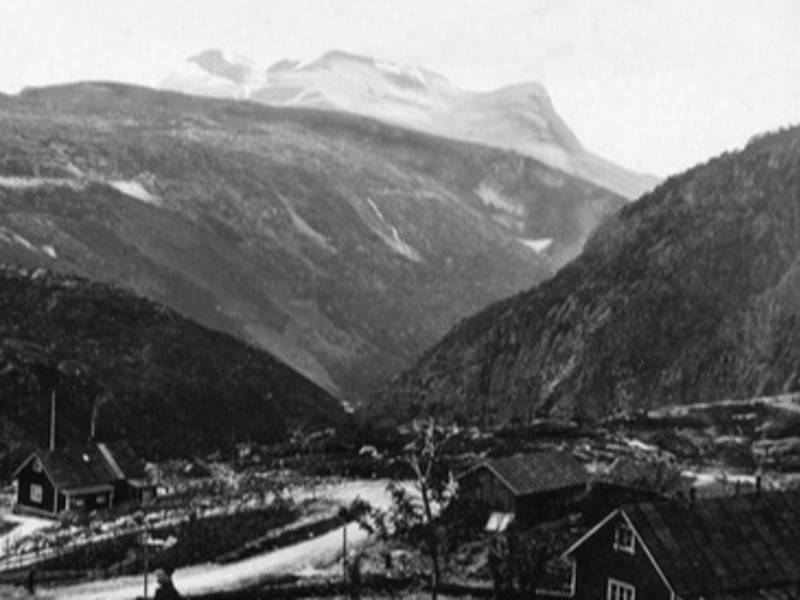
We are now passing Norddalen which is a “canyon” formed during the ice age. In these dramatic surroundings the Rallar worked skilfully with hand drills and hammers. It was not unusual to hang a rope down the mountainside so that they could later use it as landings to stand on. This landslide prone stretch of track runs through many tunnels and overhangs and has land slide systems in place across all open stretches. There were many challenges associated with transporting materials up the mountain from the fjord by horse and cart. Therefore, several cable cars were built in the area. In 1899 the SJ railway company built a cable car from Nedre Hunndalen to Bjørnfjell. This was split into two sections and went across Norddalen with a mid-stop in Norddalen next to the train tracks. Thus, avoiding a 4.5 kilometre detour up the transport road and a steep ascent. Up until the completion of the railway the cable car transported 10,000 tons of goods.
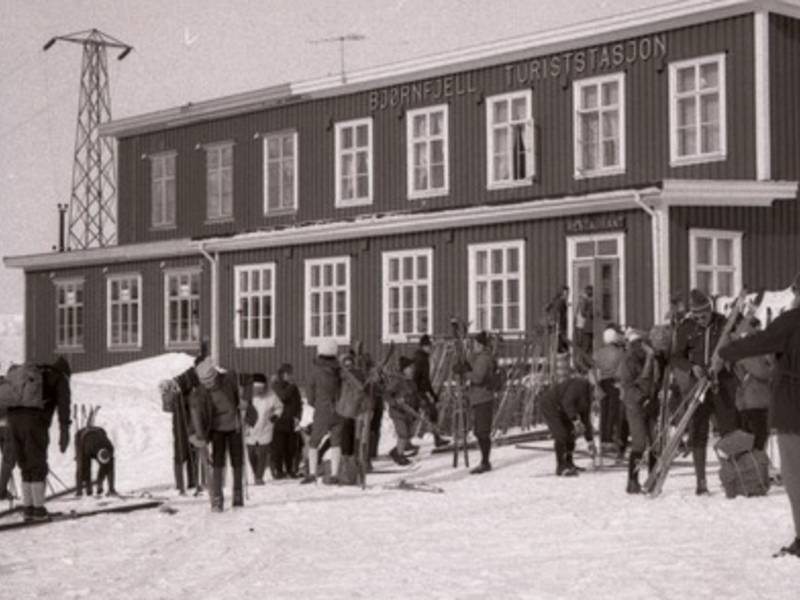
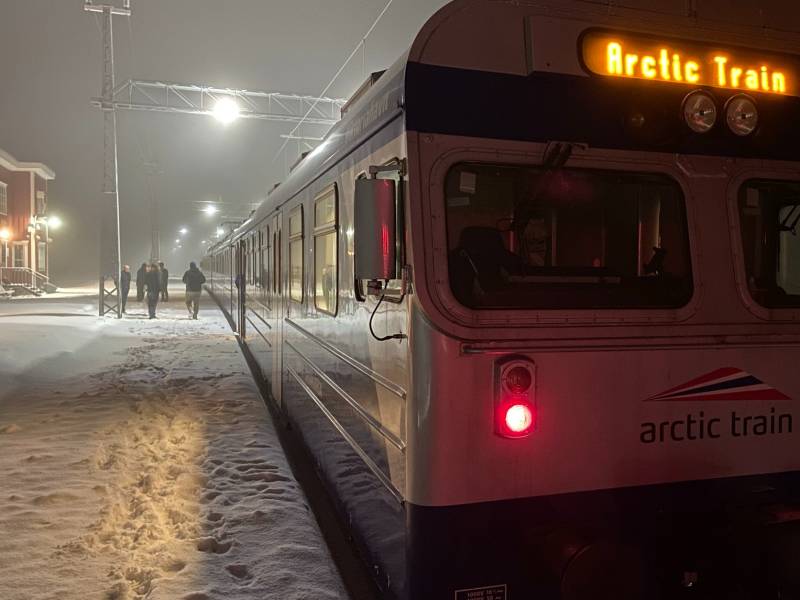
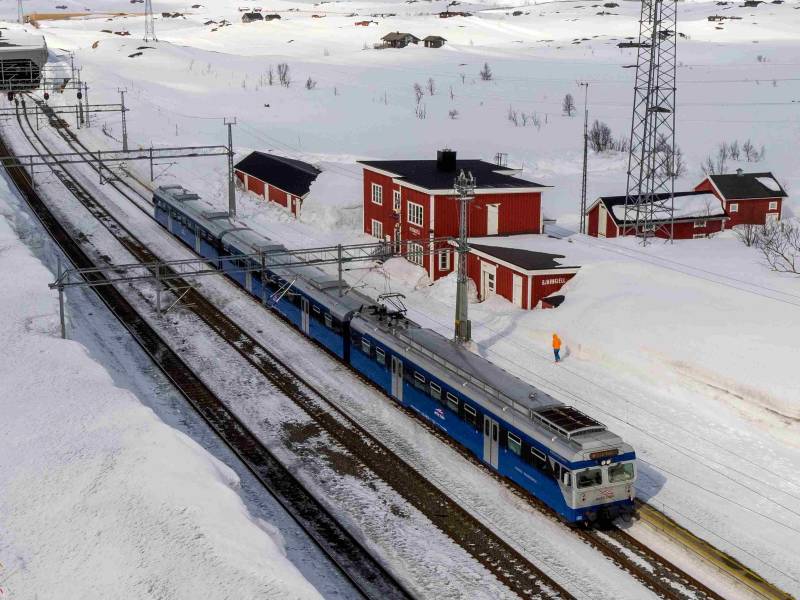
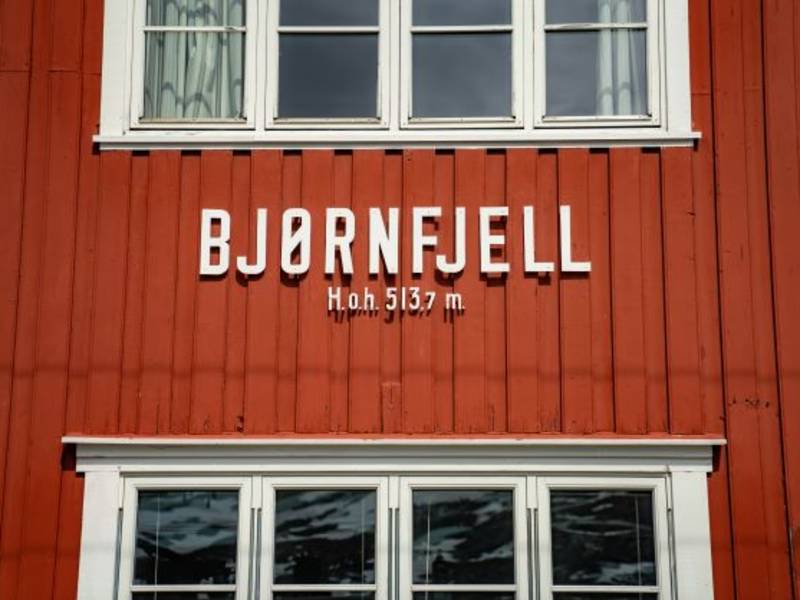
We can now welcome you to the border station of Bjørnfjell which was opened in 1925. Previously, there were on this site two old stations ‘Old Bjørnfjell’ and ‘Riksgränsen’ which were closed down. Many quickly realised that the new location would become a hub for outdoor activities. Therefore, in 1938 Bjørnfjell tourist station was built. The building is inscribed with «Bjørnfjell Turiststasjon» and was for many years run by the state-owned company that ran restaurant carriages on the trains and restaurants at the stations, which today goes by the name of Narvesen. It is now under private ownership. In the glory years it was popular to take a ‘big beer tour’, they would ski from Sweden to the tourist station and afterwards take the train back to the Riksgrensen ski area. It is conceivable that the train was very merry at that time! The Rallar road also passes through the vicinity of the station, and it is popular to walk from Bjørnfjell station to Rombaksbotn. Here you can also hike across Norway right to where Rombaksbotn flows into the Atlantic. In the station area there are many buildings that were used by railway personnel before the running of the Ofoten line was completely automized. There are also ruins and foundations from the different eras of the running of the railway and in addition many memories from the Second World War.